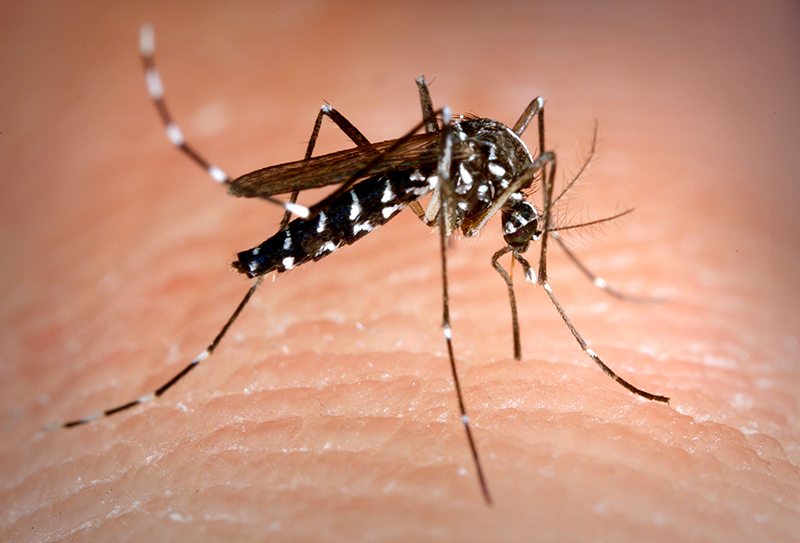Insects: Asian Tiger Mosquito (Aedes albopictus)
Origin and Date of Introduction: Asia (Northern Japan), 1985.
Pathway / Media: Shipping routes; water trapped in used tires and other products.
Reason for Introduction: Accidental, to Houston, TX, and then throughout eastern US via used tire traffic.
Preferred Habitat: Artificial (tires, bird baths, trash, rain gutters, etc.) and natural containers (bromeliads, tree holes, etc.).
Ecological / Economic Damage: Aggressive pest species; implicated in Eastern Equine encephalitis virus and dog heartworm transmission in Louisiana, and potential vector of dengue and West Nile viruses. The Asian Tiger Mosquito is a potential vector of the viruses the cause encephalitis and dengue. Its arrival as eggs and larvae in puddles trapped in natural rubber used tires is a classic case of accidental introduction through shipping pathways. This species has been highly successful because it can utilize a variety of container habitats, it will bloodfeed on almost any type of warm-blooded vertebrate, and it can overwinter in cooler climates as well as survive in the tropics.
Control Options: Eliminate, fill or frequently flush natural and artificial containers holding water.

Photo: James Gathany, USCDCP
Futher Reading: USDA Invasive Species Information Center

